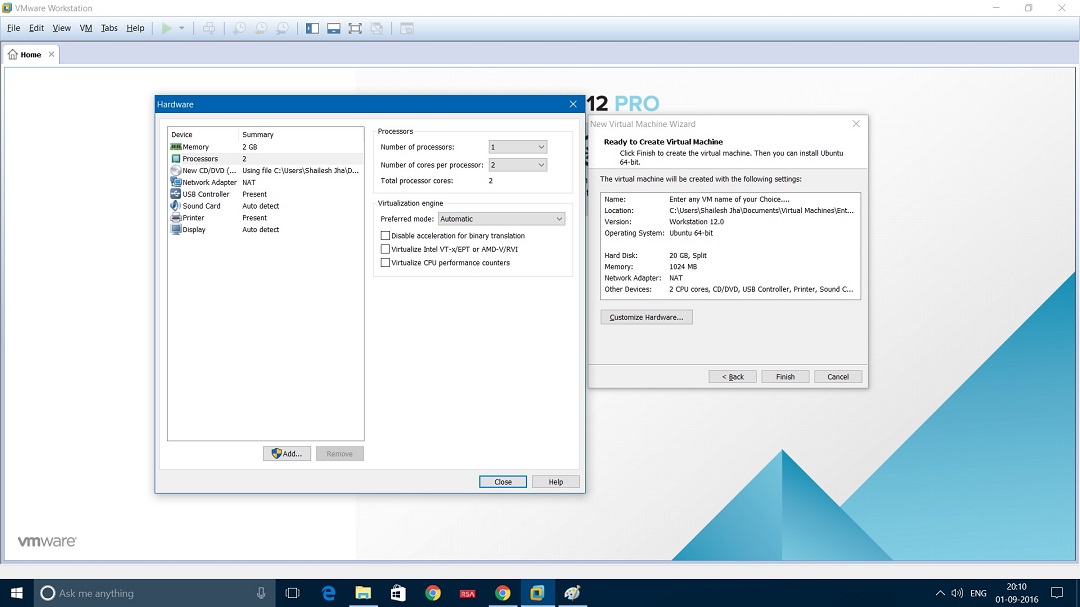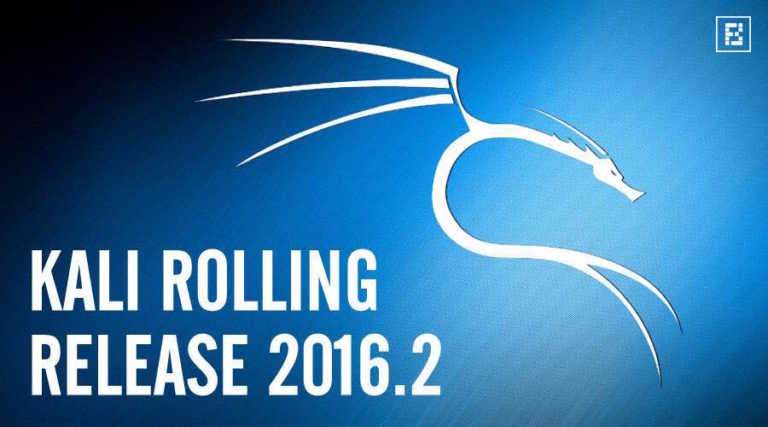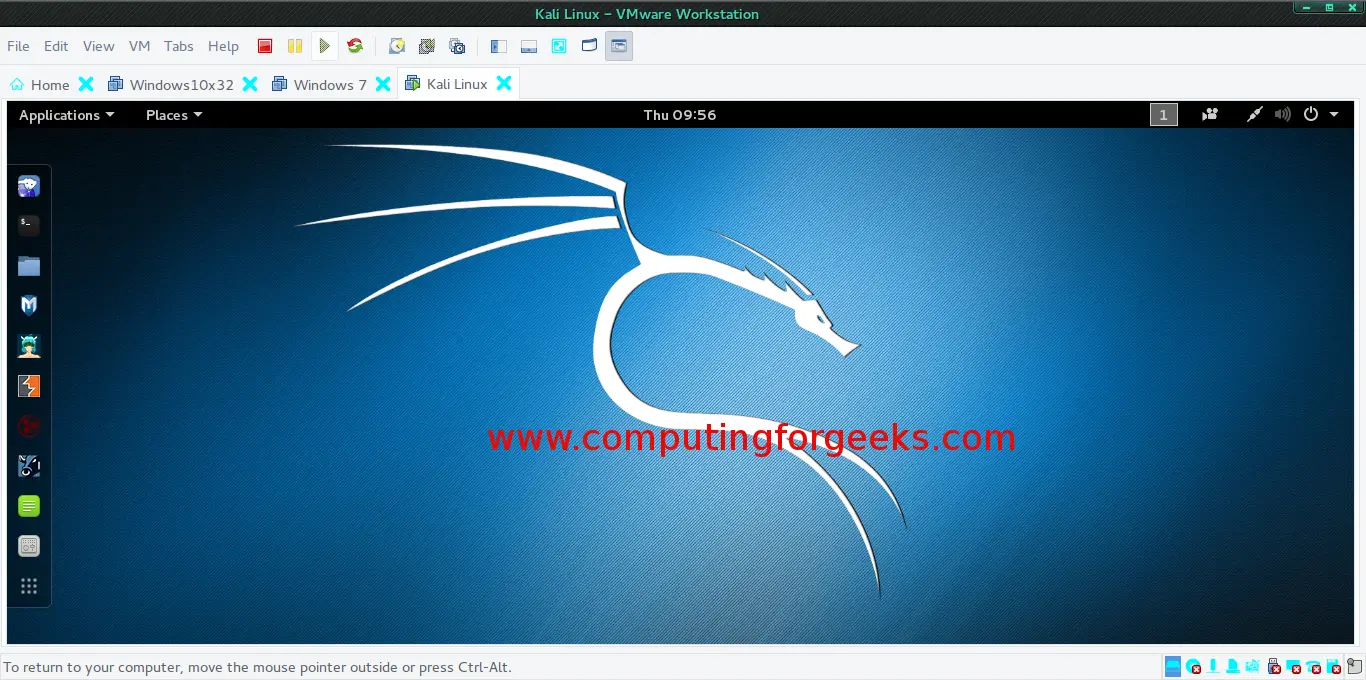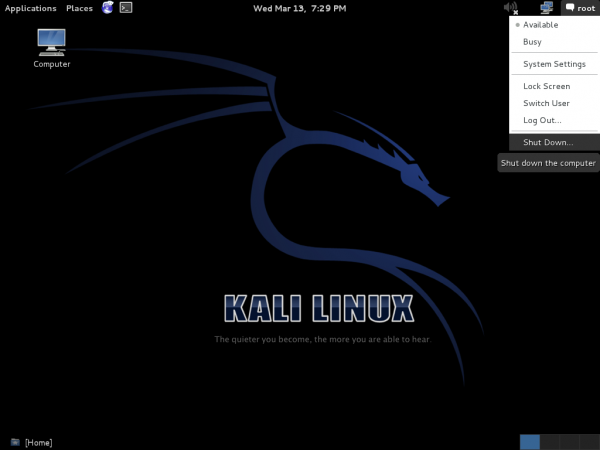

- HOW TO INSTALL VMWARE TOOLS ON KALI LINUX 2016.2 HOW TO
- HOW TO INSTALL VMWARE TOOLS ON KALI LINUX 2016.2 UPGRADE
- HOW TO INSTALL VMWARE TOOLS ON KALI LINUX 2016.2 FULL
- HOW TO INSTALL VMWARE TOOLS ON KALI LINUX 2016.2 PASSWORD
We have talked a lot about VMware Tools and benefits of running VMware tools in the VMware virtual machines.
HOW TO INSTALL VMWARE TOOLS ON KALI LINUX 2016.2 HOW TO
In this article, we have reviewed how to update the old version of Kali Linux on the VMware Workstation to the new version. You can watch the video below to install the Kali new release and also subscribe to our YouTube channel to support us!

How to Update the Kali Linux New Release ⇒ Video apt-get autocleanĪfter clearing unnecessary files, restart your PC or virtual machine and log on to your system.Īll you need to do now is increase the Disk Capacity of your Kali system running on VMware. Here, execute the following two commands.
HOW TO INSTALL VMWARE TOOLS ON KALI LINUX 2016.2 PASSWORD
Type your user name and password and press Enter to open the prompt. If it does not work in recovery mode and remains stuck, press Ctrl + Alt + F3 to open Virtual Terminal. To resolve this issue, restart your system and turn on Recovery Mode. If you have low disk space, you may experience this problem. You have upgraded and restarted your PC, but if the Login screen does not appear, this is due to the lack of disk space on your virtual machine. Kali Linux Can Not Reach the Login Screen in VMware and Stuck on “Started GNOME Display Manager”
HOW TO INSTALL VMWARE TOOLS ON KALI LINUX 2016.2 UPGRADE
The apt-get full-upgrade command will upgrade your system to the latest development/beta version.Īfter installing the new version of Kali OS, execute the shutdown –r now command to restart your system, and check the version again when your system is turned on. The apt-get upgrade command will upgrade your system to the latest stable version.
HOW TO INSTALL VMWARE TOOLS ON KALI LINUX 2016.2 FULL
If you want to do a full upgrade, you can use the full-upgrade command.Īfter checking your Internet connection, execute the following command on the terminal to update Kali Linux to 2020.1. To upgrade the Linux, execute the apt-get upgrade command on the terminal.

When a new version of Linux with bug fixes, up-to-date software, and some additional tools is released, you need to upgrade to install it on your computer. In short, it checks and saves new versions of the existing applications, and system information on the local computer. The apt-get update command does not upgrade the system version, but only fetches the information of the system and applications installed on the computer. deb kali-rolling main non-free contribĪfter configuring your repository list, run the following command on the terminal to update Kali Linux. nano /etc/apt/sources.listĪdd the following address to your sources list and press CTRL + X / Y / Enter to save the file. If there is no official repository address, run the following command to open and edit the Kali Sources List. cat cat /etc/os-releaseĪfter learning the current system version, you need to check your repository list, otherwise, the upgrade process will not start.Įxecute the cat /etc/apt/sources.list command on the terminal and check for addresses that do not have a # character. You can run the following command on the terminal or install ScreenFetch to find out the current system version. In this article, we will update the old Kali Linux 2018 operating system running to 2020.1 on the VMware virtual machine.Īfter backing up your computer or virtual machine, run your Kali operating system and turn on the terminal on the desktop.

If you are using Kali on one of the VMware or VirtualBox virtualization programs, you can get a new Snapshot for system backup.


 0 kommentar(er)
0 kommentar(er)
